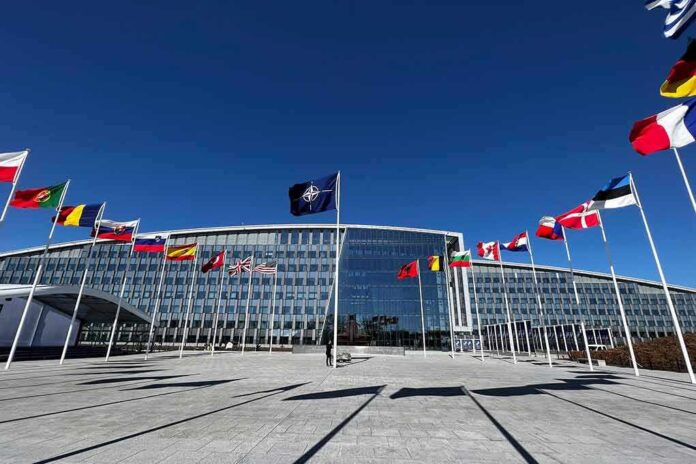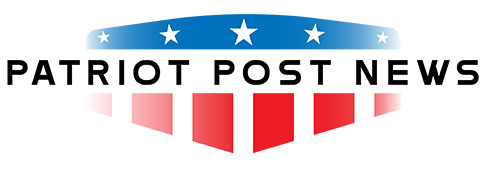
NATO’s strategic restraint in supporting Ukraine amid the Russia conflict has been carefully managed to avoid wider war triggers.
At a Glance
- NATO is celebrating its seventy-fifth anniversary amidst significant challenges.
- The alliance’s primary mission is to support Ukraine and help it defeat Russia.
- The war in Ukraine has become a prolonged conflict with no clear end in sight.
- Western allies are providing military support and training to Ukraine but are hesitant to commit to NATO membership for Ukraine.
- NATO officials acknowledge that Ukraine needs more than current support to win the war.
NATO’s Measured Response to the Russia-Ukraine Conflict
Strategic restraint is defining NATO’s approach amidst the ongoing conflict between Ukraine and Russia. As Ukraine appeals for increased military intervention, NATO is steering clear of direct military entanglement, opting instead to supply military equipment, combat training, and economic support to bolster Ukraine’s resistance.
NATO, now celebrating its seventy-fifth anniversary, faces one of its most significant challenges. The alliance’s primary mission is to support Ukraine and help it defeat Russia. Notably, Western allies are cautious about extending NATO membership to Ukraine, preferring to avoid escalation with Russia.
The war in Ukraine, now a prolonged conflict with no clear end in sight, has led to the establishment of a new NATO command staffed by 700 personnel to support Ukraine. This command is tasked with providing military training and coordinating arms deliveries, including advanced weaponry like the F-16 fighter jets and new air defense systems.
Join us in celebrating #EuropeDay!
NATO and the European Union 🇪🇺 are strong partners since the early 2000s. The two organisations share the same values and challenges, and have complementary roles in supporting international peace and security pic.twitter.com/EiwkYNwqXx
— NATO (@NATO) May 9, 2024
Balancing Act Amid Global Risks
NATO’s strategic approach aims to protect global stability by avoiding direct involvement in the war. Incremental escalation in military support remains the preferred method, a tactic deemed crucial by the alliance. “We’re basically propping up Ukraine to stay in the battle and make some advances and not outright win the battle,” said Liana Fix, a fellow for Europe at the Council on Foreign Relations. “There’s not a real strategy for the war.”
“They’re trying to navigate a very delicate line,” said a senior NATO official. “Our goal is to do everything necessary to make sure Russia does not win this war.”
Despite substantial support, officials acknowledge that Ukraine needs more to secure victory. Eastern NATO allies advocate for increased support, while the U.S. and others exercise caution, concerned about future U.S. political shifts, especially if Donald Trump is re-elected. The current situation is considered more precarious than Cold War-era conflicts due to higher stakes and risks of unintended escalation.
NATO’s Strategic Commitments and Future Considerations
At the recent NATO summit in Washington, the focus remained on intensifying support for Ukraine and offering a path to eventual membership. However, NATO enlargement, particularly to Ukraine, has been controversial. Some argue it has contributed to the Russia-Ukraine conflict. Russian leaders and Western analysts have long warned that NATO expansion could provoke Russian nationalism and deteriorate East-West relations.
Joshua Shifrinson, writing for the Carnegie Endowment, reminded James Goldgeier that “Claiming that NATO is purely defensive is not 100 percent accurate, for example.”
NATO officials maintain that safeguarding freedom, democracy, individual liberty, and the rule of law remains central to their mission. New regional defense plans and a force model have been adopted to better combat threats from Russia and other actors, recognizing China as a new challenge for the first time in NATO strategy.
Sources
- https://www.nato.int/cps/en/natohq/topics_192648.htm
- https://carnegieendowment.org/emissary/2024/07/nato-summit-ukraine-russia-war?lang=en
- https://foreignpolicy.com/2024/07/12/nato-summit-ukraine-russia-military-war/
- https://carnegieendowment.org/posts/2023/07/why-nato-should-be-cautious-about-admitting-ukraine?lang=en
- https://www.nationaldefensemagazine.org/articles/2024/1/31/just-in-top-nato-official-urges-us-to-consider-russia-most-immediate-threat
- https://www.armyupress.army.mil/Journals/Military-Review/English-Edition-Archives/July-August-2024/NATO-Strategic-Concept/
- https://www.rand.org/pubs/research_briefs/RBA2807-1.html
- https://www.nato.int/docu/review/articles/2022/07/07/the-consequences-of-russias-invasion-of-ukraine-for-international-security-nato-and-beyond/index.html
- https://www.csis.org/analysis/nato-ready-war
- https://www.washingtonpost.com/national-security/2023/07/12/biden-vilnius-nato-ukraine/

























